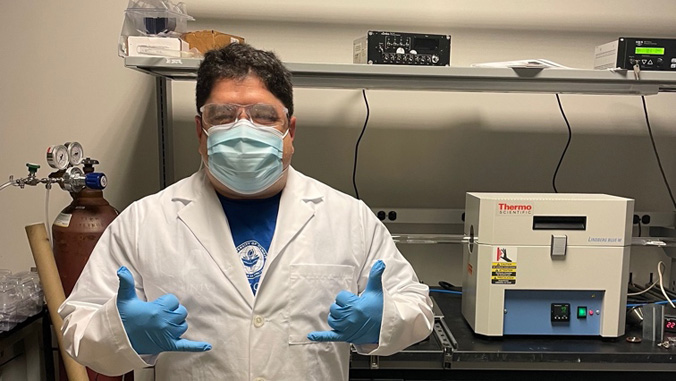
A research project intended to study new materials with possible uses in advanced electronics and carbon capture led by Chad Junkermeier, materials computation laboratory instructor of University of Hawaiʻi Maui College, has received a $200,000 National Science Foundation award. One of the goals of “Theoretical Analysis of N-carbophenes: a novel class of 2D hydrocarbons” is to contribute to better devices to capture carbon dioxide and methane.
Other possible uses of carbophenes include flexible electronics, chip-based chemical sensors or anything in which a nanoscale pore structure would be advantageous.
Junkermeier explained that a couple of years ago, a team of researchers had reported that they had synthesized a long-hypothesized type of two-dimensional sheet of carbon atoms called graphenylene.
He said those researchers “hedged their bets” by saying they may have instead created a similar, but never before proposed, type of material called carbophene. Junkermeier said he and others have theoretically demonstrated that some of the properties of carbophene suggest it was the more likely candidate.
“Synthesizing either carbophene or graphenylene in the lab would be a huge win in the materials science community,” Junkermeier said. “However, from my discussions with experts in materials synthesis, experimentally distinguishing between the two might be the challenge. While the proposed research is focused on understanding basic properties of carbophenes, we will continue to keep an eye focused on guiding experimental synthesis.”
During a recent UH Space Grant Consortium NASA Space Grant traineeship, UH Maui College 2021 graduate Jedediah Kobobel examined how carbophenes could capture carbon dioxide. Kobobel’s preliminary results demonstrated that carbophenes might be a better choice than other candidates for the next generation of spacecraft carbon scrubbers. Work proposed in the new grant will build upon Kobobel’s.
The two-year project also involves researchers from Pennsylvania State University, the University of Ottawa (Canada) and Universidade Estadual Paulista (Brazil). To determine the effectiveness of carbophenese for absorption of these gases, the team plans to compare carbophenes structures with other proposed materials. In addition to greenhouse gas absorption, the work will seek to determine other physical properties of carbophenes so they can be reliably used in devices.

